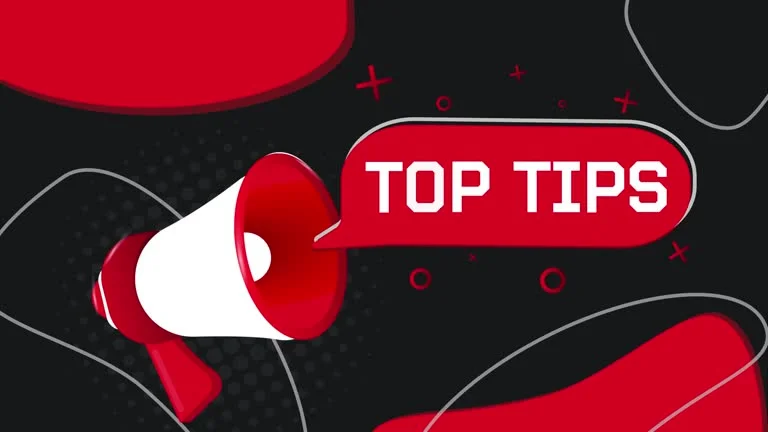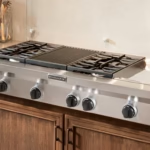In today’s busy market, how your brand looks is very important for attracting customers. A good banner can quickly share your message and catch people’s attention.
But banner design is not just about looking nice-it can also affect how customers act and even increase sales. For small businesses, using the right design tips can make a big difference.
In this guide, we’ll share simple but powerful strategies to turn your banner from basic to eye-catching. Let’s get started!
Discover insights in our related posts that could transform your approach today.
Understanding Your Audience
Before jumping into design, understanding your target audience is essential for creating a meaningful banner. Consider their preferences, behaviors, and needs. Are they looking for promotions, information, or engagement?
Conducting surveys and analyzing customer data can provide insights into what resonates with them. For example, a vibrant, playful banner might appeal to younger audiences, while a more minimalist approach could attract professionals. Tailoring your design elements to align with your audience’s psychographics can significantly enhance their effectiveness.
Choosing the Right Colors
Colors evoke emotions and convey significance, making them a powerful tool in banner design. Color can increase brand recognition. Selecting the right color palette not only sets the tone but also helps in establishing visual coherence within your marketing campaigns.
For example, blue often signifies trust, while red can evoke urgency. When selecting colors, consider your brand identity and the emotions you aim to convey. Tools like Adobe Color can assist in creating harmonious palettes that attract attention while maintaining brand consistency.
Incorporating Compelling Typography
Typography is another vital component of banner design. The choice of font can dramatically impact readability and brand perception. Serif fonts may convey tradition and reliability, while sans-serif fonts are often viewed as modern and approachable.
When designing banners, ensure that your chosen fonts are legible even from a distance. Additionally, limit yourself to two or three different font styles to avoid visual clutter. Combine a bold headline with a lighter subtext for contrast, making your message easy to digest.
Using High-Quality Images
Images play a crucial role in capturing interest and can often communicate a message more effectively than words. However, using high-quality images rather than stock photos is vital to ensure authenticity. Visuals can increase engagement rates by up to 94%.
When selecting images, make sure they align with your message and resonate with your audience. For instance, a local bakery may choose images of their freshly baked items rather than generic pictures of cupcakes to evoke a sense of community and quality.
Crafting a Clear Message
Clarity is key when it comes to marketing banners. Your message should be concise and straightforward, ensuring that it can be understood at a glance. Consumers have an attention span of just eight seconds, meaning every second counts.
Use short, impactful phrases that convey your brand’s value proposition. For example, instead of saying, “We offer a range of products,” try “Quality products, best price!” Always include a compelling call-to-action (CTA) that encourages people to take the next step, whether it’s visiting your website or signing up for a newsletter.
Incorporating Effective Call-to-Actions
A call to action serves as a guide for your audience on what to do next. Well-crafted CTAs can significantly improve conversions. Use action-oriented language and ensure the CTA stands out visually.
Whether it’s a button that says “Shop Now” or “Sign Up Today,” these phrases provide clarity and urgency. Test different CTAs to see which ones resonate most with your audience. Tools such as heat maps can help track user engagement with various elements of your banner.
Optimal Size and Format
The size and format of your banner significantly influence its performance, especially in digital marketing. For example, a standard banner ad size is 728×90 pixels, while a vertical banner might be 160×600 pixels. Ensuring your banners are optimized for various platforms-including social media, websites, and email-can enhance visibility.
Consider using responsive designs that adjust to different screen sizes. This approach guarantees that your banners look great on desktop and mobile devices. Additionally, ensure the file size is manageable to avoid slow loading times; a mere one-second delay can reduce conversions.
Utilizing an Online Banner Maker
Creating an effective banner design doesn’t have to be complex. Many of these platforms also allow you to customize elements, ensuring your banner is unique to your brand. Choose one that provides drag-and-drop functionality, making it easy to include your images, text, and branding elements.
Thus, an online banner maker can streamline the process, offering templates and design options tailored to small businesses. These tools allow you to experiment with designs while saving time and resources.
A/B Testing Your Banners
Testing different versions of your banners can provide valuable insights into what works best. A/B testing, or split testing, involves creating two or more variants of the same banner to see which performs better. By changing one element at a time-such as color, image, or CTA-you can gauge what resonates more with your audience.
Monitor metrics such as click-through rates (CTR) and conversion rates to evaluate performance. This data can help you make informed decisions about future banner designs and marketing strategies.
Monitoring and Analyzing Performance
Once your banners are live, it’s important to keep checking how they perform. Use tools that track views, clicks, and sales. Google Analytics and social media insights can give you useful data on how people respond to your banners.
Looking at this data can show you what works best and what your audience likes. For example, if a certain color gets more clicks, use that color in future banners. Keeping track and making changes over time is key to improving your banner design and getting better results.
Elevate Your Small Business Marketing
Good banner design is a strong tool for small businesses that want to improve their marketing. When you know your audience, choose the right design parts, and keep making updates, you can create banners that grab attention and get people interested.
The right design choices can make your brand stand out in a busy market. Now is the best time to use these banner tips and take advantage of the power of great visuals in your marketing!
Looking for more tips and advice? You’re in the right place! Make sure to bookmark our page and come back to check out more interesting articles.
Check out this featured post that’s making waves—insights you can’t miss.






